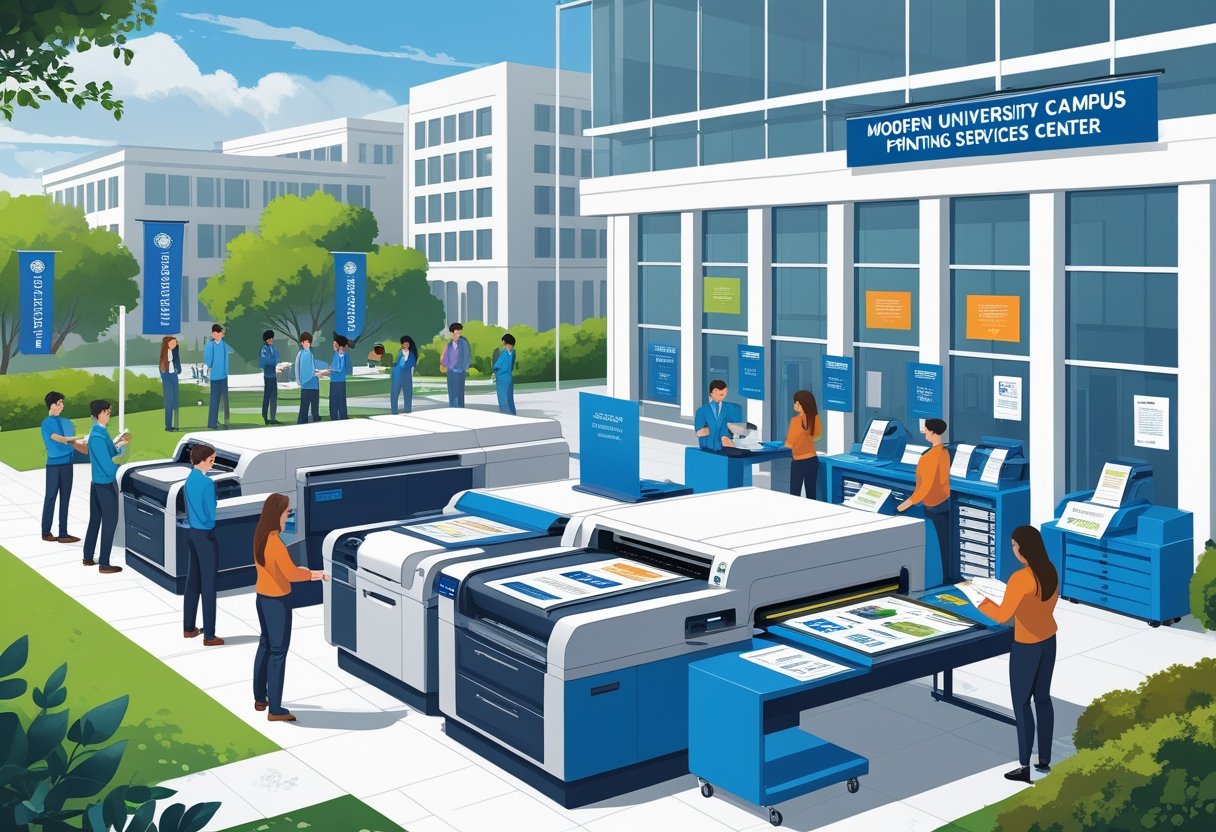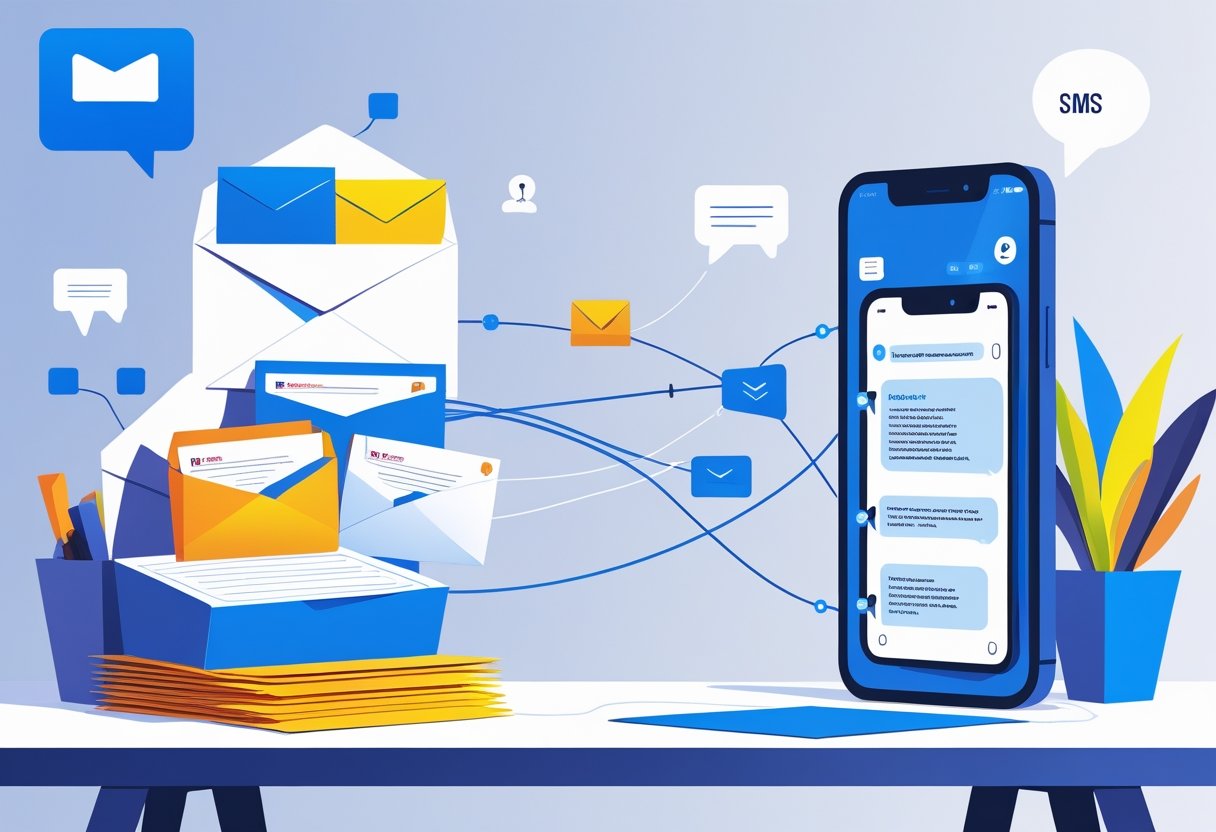Segmenting your mailing list is a vital strategy for enhancing your email marketing efforts. By dividing your subscribers into specific groups based on their interests, behaviors, or demographics, you can send more targeted and relevant content, which leads to higher engagement rates. This practice not only improves your communication but also builds stronger relationships with your audience.
At Mail Processing Associates, we understand that effective segmentation can transform the way you connect with your customers. With our Comprehensive Mailing and Printing Solutions, you can tailor your marketing messages to resonate with different segments of your audience, ensuring that each group receives content that speaks directly to their needs.
When you prioritize email list segmentation, you create opportunities for improved responses and conversion rates. It's time to explore how you can implement these strategies effectively and why partnering with Mail Processing Associates will allow you to optimize your mailing and printing processes like never before.
Understanding Mailing List Segmentation
Mailing list segmentation is a vital strategy in email marketing that can enhance your outreach efforts. By breaking your audience into smaller groups based on specific characteristics, you can deliver more relevant content that resonates with each subscriber.
What Is Email List Segmentation
Email list segmentation involves dividing your subscriber list into distinct groups. This process is based on various criteria such as demographics, behaviors, and preferences.
For instance, you might segment your list by age, location, or purchase history. This allows you to cater your messaging effectively, ensuring each recipient receives information tailored to their interests. The result is a more engaged audience and a higher likelihood of conversions.
Benefits of Segmenting Your Mailing List
Segmenting your mailing list offers several significant benefits. First, it enhances engagement by allowing you to send targeted email marketing campaigns. Subscribers are more likely to open and act on emails that speak directly to their interests.
Moreover, segmenting can help improve deliverability rates. By sending relevant content, you decrease the chances of subscribers marking your emails as spam. Customized messaging often leads to higher open rates and better overall performance in your campaigns.
Additionally, using customer data for segmentation can help identify trends. You’ll see what types of content resonate with specific groups, which can shape future marketing strategies.
Common Segmentation Criteria
When segmenting your list, consider the following criteria:
- Demographics: Age, gender, and location help tailor messages to fit the audience's identity.
- Behavior: Track interactions with previous campaigns to refine your messaging.
- Preferences: Gather information on what types of content your subscribers prefer to receive.
- Purchase History: Segment based on past purchases to promote relevant products.
Utilizing these criteria enables more focused communication. This approach ensures each message you send is meaningful, enhancing connections with your audience. At Mail Processing Associates, our expertise in mailing and printing solutions can support your segmentation efforts, ensuring your campaigns are both effective and efficient.
Segmentation Strategies and Techniques
Effective segmentation of your mailing list allows for targeted communication that resonates with specific groups. The following strategies help you categorize your audience based on key characteristics, enhancing engagement and conversion rates.
Demographic Segmentation
Demographic segmentation involves categorizing your subscribers based on quantifiable statistics. Key factors include age, gender, income, education, and occupation.
For example, targeting different age groups may involve promoting family-oriented products to parents while marketing luxury items to professionals. Understanding gender differences can help tailor messages effectively, as they may influence buying behavior.
Utilizing demographic data allows you to create messages that speak directly to each group’s interests and needs. For instance, a campaign for a tech product might target younger audiences more effectively than older demographics.
Behavioral Segmentation
Behavioral segmentation focuses on consumer actions and patterns. This approach can include aspects such as purchase history, engagement levels, and usage rates.
By analyzing how subscribers interact with your emails, you can identify purchasing triggers. For example, customers who frequently open emails may be more receptive to promotional offers.
You can invite feedback and track customer journeys, tailoring marketing efforts based on specific behaviors observed. This method allows for highly personalized campaigns, fostering strong customer loyalty.
Psychographic Segmentation
Psychographic segmentation delves deeper into the lifestyle, values, and interests of your subscribers. Unlike demographic data, this approach uncovers the motivations behind customer behavior.
For instance, targeting individuals who prioritize sustainability might involve marketing eco-friendly products. Additionally, segmenting based on hobbies can help in crafting relevant content that sparks interest.
This strategy allows you to connect on an emotional level with your audience, guiding them through the decision-making process more effectively. By understanding what drives your customers, you can present solutions that align with their values.
Geographic Segmentation
Geographic segmentation classifies your audience based on their location, whether it be continent, country, region, or city. This technique can be particularly useful for businesses with location-specific offerings.
For example, a food delivery service may want to promote different menus based on local preferences. Similarly, seasonal promotions can vary depending on geographic locations.
Understanding geographic differences often requires compiling data on local cultures and economies. Creating targeted campaigns for specific regions ensures that your messaging aligns with local sentiments and needs.
Mail Processing Associates provides tailored solutions to optimize your mailing and printing processes. With a focus on these segmentation strategies, you can enhance your marketing effectiveness and drive better results.
Advanced Mailing List Segmentation Criteria
Using advanced criteria for segmenting your mailing list can significantly enhance your marketing efforts. Understanding the behaviors, preferences, and engagement levels of your subscribers allows for more personalized and effective communication.
Behavioral Data and Purchase History
Analyzing behavioral data and purchase history is crucial. By segmenting your list based on past purchases, you can identify trends and preferences. For example, if a customer frequently buys eco-friendly products, targeting them with similar offerings can increase engagement.
Consider the following key points:
- Buyer's Journey: Recognize where each customer is in their journey.
- Cart Abandonment: Target customers who added items to their cart but did not complete the purchase.
Utilizing behavioral patterns allows you to tailor your messaging, improving conversion rates. This targeted approach can lead to increased sales and customer loyalty.
Customer Preferences and Interests
Segmenting by preferences and interests helps you create more relevant content. Understanding what types of products or services resonate with your audience enhances your ability to deliver tailored communications.
To gather this data:
- Conduct surveys to learn about your subscribers' interests.
- Monitor social media engagement to see which topics attract attention.
By aligning your campaigns with subscriber interests, you foster a stronger connection. This method directly addresses their needs, making your emails more appealing and effective.
Email Engagement and Activity Level
Engagement levels dramatically influence how you should communicate with your audience. Segmenting by email activity enables you to identify inactive customers and engage them differently than active subscribers.
For example:
- High Engagement: Send exclusive offers or loyalty rewards.
- Inactive Customers: Re-engage them with special campaigns or surveys to understand their disinterest.
Tailoring content based on engagement ensures you're sending the right message at the right time. By focusing on these segments, you can improve open rates and enhance overall campaign performance.
Mail Processing Associates is your best option for comprehensive mailing and printing solutions. Our services are designed to optimize these processes, ensuring your campaigns reach the right people with the right message.
Implementing Segmentation in Email Marketing Campaigns
Effective segmentation transforms your email marketing strategy, enabling you to send personalized content and relevant emails. By utilizing targeted campaigns and automation, you can significantly enhance engagement and conversion rates.
Personalized Content and Relevant Emails
Personalization in email marketing is more than using a subscriber's name. It involves tailoring content based on individual preferences, behaviors, and demographics.
Consider segmenting your list based on the following:
- Purchase history: Send recommendations aligned with previous purchases.
- Location: Customize offers based on regional events or changes in weather.
- Engagement level: Target re-engagement campaigns toward those who haven't opened emails in a while.
This approach ensures your communications resonate with each recipient, leading to higher open rates and lower unsubscribe rates. Welcome emails can be particularly effective in this regard, as they set the tone for future interactions.
Targeted Email Campaigns
Creating targeted campaigns involves sending specific messages to carefully defined groups within your subscriber list. The effectiveness of targeted emails lies in their relevance, which decreases the likelihood of being marked as spam.
To implement targeted campaigns effectively:
- Define your segments clearly—whether by engagement level, purchase behavior, or interests.
- Craft unique messages catered to each segment, ensuring that the content speaks directly to their needs and interests.
- Test and analyze performance metrics to refine your strategies continuously.
Utilizing data-driven insights can significantly improve your ROI on these campaigns, making it easier to convert leads into loyal customers.
Automation and Email Marketing Tools
Automation streamlines your email marketing processes, but it requires a solid segmentation strategy to maximize effectiveness. After setting up segments, you can automate workflows for various scenarios, such as:
- Welcome emails for new subscribers.
- Follow-ups for abandoned carts.
- Birthday or anniversary offers based on specific customer data.
Additionally, using an effective email marketing tool ensures that you can easily manage your segments. Tools offered by Mail Processing Associates optimize your mailing and printing processes, making it easier to design and distribute tailored emails at scale.
With automation, your targeted campaigns can run consistently, allowing you to focus on strategy and creative content. This results in higher engagement and better customer retention.
Measuring the Impact of Segmentation
Understanding the metrics associated with your segmentation strategy is essential. By focusing on specific performance indicators, you can gain insight into how effective your segmentation efforts are in improving engagement and overall campaign performance.
Improved Open and Conversion Rates
Segmenting your email list can lead to higher open rates. Targeted content resonates more with specific groups, resulting in increased interest. According to industry studies, marketers who segment often see a lift in open rates by as much as 39%.
Moreover, conversion rates improve as well. When you tailor messages to fit the interests or behaviors of segmented groups, you enhance the likelihood of recipients taking action, whether it’s making a purchase or signing up for a webinar. The combination of relevant content and targeted delivery maximizes ROI for your campaigns.
A/B Testing and Campaign Optimization
A/B testing is invaluable in refining your segmented campaigns. By experimenting with different subject lines, content formats, and calls to action, you can uncover what resonates most with each segment. This targeted approach allows for precise optimization.
The insights gained from A/B tests can significantly inform future campaigns. You’ll be able to adapt your strategies based on real data, resulting in higher conversion rates and improved audience engagement. Effective testing not only enhances individual campaigns but also contributes to long-term brand loyalty among your customers.
Deliverability and Unsubscribe Rates
Maintaining high deliverability rates is vital to your email strategy. Segmentation can lead to fewer emails being marked as spam, as your targeted content is more likely to engage subscribers. This, in turn, increases your reach and ensures that your messages land in inboxes.
On the flip side, poorly targeted emails may lead to higher unsubscribe rates. By sending irrelevant messages to a broad audience, you risk alienating your subscribers. Focused segmentation reduces this risk, helping you retain subscribers and maintain a positive customer relationship.
Customer Retention and Loyalty
Segmenting your mailing list plays a critical role in enhancing customer retention and loyalty. By sending personalized content to specific segments, you foster a deeper connection with your audience. Relevant messaging encourages repeated engagement, making them more likely to become loyal customers.
Re-engagement campaigns also benefit from segmentation. You can identify inactive subscribers and craft targeted re-engagement strategies tailored to their preferences. As a result, you not only bring back lapsed customers but also strengthen their loyalty to your brand over time. At Mail Processing Associates, our comprehensive mailing and printing solutions can help you optimize these processes, ensuring your campaigns resonate deeply with the right audience.
Best Practices for Effective Mailing List Segmentation
Effective mailing list segmentation is crucial for enhancing customer engagement. By implementing best practices, you can create targeted, relevant messaging that resonates with your audience. Below are key strategies to consider.
Maintaining Up-to-Date Customer Data
Keeping your customer data current is essential for accurate segmentation. Regularly review and update customer profiles to reflect changes in preferences or demographics.
Encourage users to edit their information through periodic surveys or during email sign-ups. Utilizing automated tools can significantly streamline this process by integrating real-time edits.
Furthermore, consider segmenting based on lifecycle stages. This approach will allow you to tailor messages not only to interests but also to where they are in their customer journey.
Integrating Segmentation with Marketing Strategy
Aligning your segmentation with broader marketing goals enhances its effectiveness. Define clear objectives for each segment based on your overall marketing strategy.
For instance, if your aim is to boost customer retention, create segments focused on recent purchasers or infrequent buyers.
Utilize analytics to measure engagement across different segments and adapt your strategy accordingly. Regular assessments can help in identifying which segments yield the highest returns, allowing you to optimize campaigns effectively.
Ensuring Compliance and Respecting Privacy
Respecting customer privacy is paramount in today's digital marketing landscape. Always comply with regulations such as GDPR and CAN-SPAM.
Ensure that your email sign-up forms clearly communicate how data will be used. Readers appreciate transparency, fostering trust and better relationships.
Additionally, give subscribers the choice to opt-out or customize their preferences. This approach not only complies with legal requirements but also enhances customer satisfaction.
At Mail Processing Associates, we advocate for ethical practices in mailing and printing solutions. Our comprehensive approach helps businesses maintain strong customer relationships while ensuring compliance.
Frequently Asked Questions
This section addresses common inquiries about segmenting mailing lists. By understanding best practices, criteria, examples, and tools, you can enhance your email marketing efforts effectively.
What are the best practices for segmenting a mailing list?
Best practices include defining clear segmentation criteria, using personalization, and regularly updating your segments. Testing different approaches can reveal what resonates best with your audience.
How does email list segmentation improve marketing campaigns?
Email list segmentation allows for targeted messaging, increasing engagement rates. When messages are relevant to specific groups, open and click-through rates typically improve, leading to higher conversion rates.
What criteria should be used to segment an email list effectively?
You can segment your list based on demographics, purchase history, engagement levels, or location. Each business may find different criteria more effective, depending on its goals and audience.
Can you provide examples of successful email segmentation strategies?
Successful strategies include sending personalized offers to frequent buyers, targeting lapsed customers with special promotions, or creating content-specific segments based on user interests. Tailored messaging can drastically improve engagement.
How often should a mailing list be re-segmented to maintain its effectiveness?
Re-segmenting should occur regularly, at least every few months. Changes in customer behavior or new data should prompt updates to ensure that segments remain relevant and effective.
What tools and platforms are recommended for managing segmented mailing lists?
Utilizing email marketing platforms with robust segmentation capabilities is crucial. These tools help manage lists effectively, allowing for seamless integration and automation. Mail Processing Associates offers tailored solutions for businesses to optimize their mailing and printing processes, ensuring that your marketing efforts are efficient and effective.






.png)






